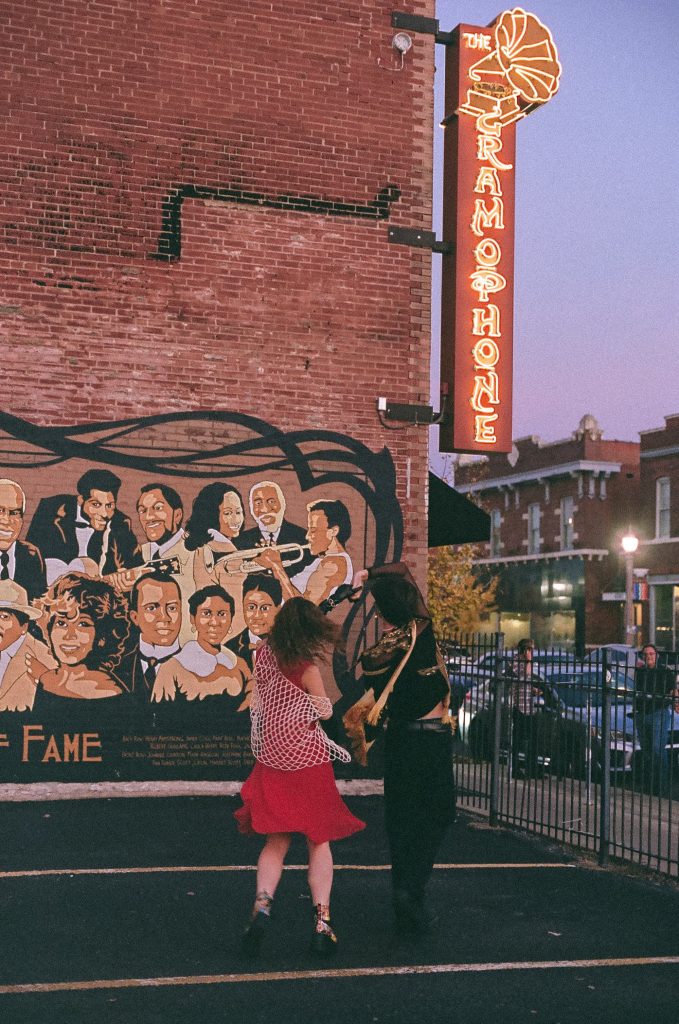The Gramophone: A Tale of Two Twenties
One of my fondest childhood memories was setting up my first record player and listening to Queen’s “A Night at the Opera” album with my dad. I loved the warmth of Freddie Mercury’s voice against the vibration of each instrument and how the vinyl made a hissing sound after each ballad before a new one played. I would flip the sides of a record over and over again, each time discovering new sounds lurking behind the same grooves I traced before.
Like all vinyls, there are always two sides to a story. Named for the record player’s predecessor, The Gramophone opened its hallowed doors in March 2008 in the Grove neighborhood of St. Louis as an intimate concert club. However, after 7 years and over 1500 successful shows, its owners decided to transform the space into a swanky sandwich pub—serving St. Louisans with good times and good food.

Today, almost 15 years after its establishment, The Gramophone is a hotbed for restless locals and students after a long night out. Patrons from all over the country come to enjoy a crafted sandwich or beer, listen to music, and maybe play a game of pool before heading home. This is all relatively standard for a restaurant bar, but one thing sets The Gramophone apart: no private parties allowed.
In learning this, it is clear that The Gramophone’s transition was not motivated by the prospect of increased profits. Rather, it was driven by the principle of togetherness that is inherit to non-exclusive parties. The venue still hosts live music events, only now they serve as a backdrop to the sound of chatter and clinking billiard balls. This shift isn’t indicative of a diminished value for music, but rather a revived appreciation for large gatherings. Perhaps unironically, this attitude harkens back to the 1920’s, or “Roaring Twenties,” when the gramophone first popularized.

Indeed, there are more similarities between the era of the flapper and a post-COVID-19 world than one might expect. While it is tempting to consider our recent pandemic an “unprecedented” catastrophe, it was just a hundred years ago that the “Spanish flu” infected an estimated 500 million people and wiped out 50 million from the world’s population. Political tensions heightened, millions were without jobs, and prohibition prevailed. Even the women’s suffrage movement is comparable to today’s fight for abortion rights. Both then and now, such social unrest ushered in an age of frivolous partying and ostentatious living as a means of distracting oneself and returning to “normalcy.”

In a way, The Gramophone’s opposition to private parties resembles F. Scott Fitzgerald’s representation of the extravagance which marked the 1920’s. In Great Gatsby, he writes “I like large parties. They’re so intimate. At small parties there isn’t any privacy.” Since privacy breeds self-consciousness, people feel less conspicuous at large gatherings and therefore act more naturally. This is certainly the case in Gatsby, where characters free themselves from the troubles of war and the Great Depression by partaking in such grandiose celebrations.
Today is not all that different. We live in an age of “one more dance” or “one more drink” before we go home and face closer examination of life’s circumstances and who we really are. As Fitzgerald puts it, “we beat on, boats against the current,” numbing the pain we already cannot feel, “borne ceaselessly into the past,” because we never learn our lesson. The Gramophone’s rising popularity, therefore, proves that Fitzgerald’s words were prescient. However, one question still remains: will the 2020’s roar as loudly as the 1920’s?

Creative Direction Reni Akande and Bryanna Mendez
Words Meyme Nakash
Photographs Ariana Kohl, Owen Rokous
Stylists Maddie Savitch, Cara Gillow
Clothing Assassin Vintage
Featuring Ethan McCormick, Erin Ritter
Armour Magazine Season 29 — F/S 2023


